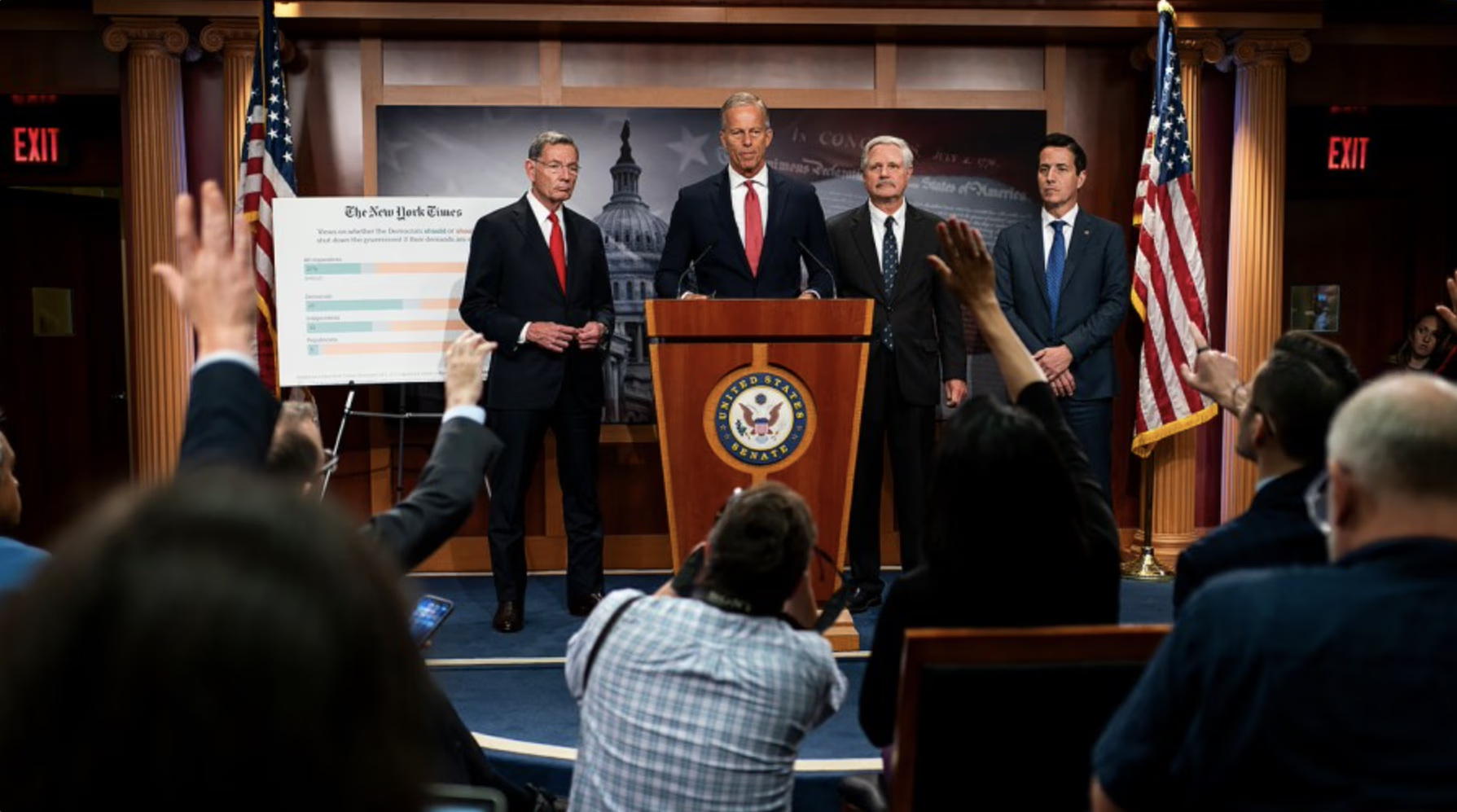The federal government officially shut down at midnight on Wednesday after congressional leaders failed to agree on a stopgap funding bill. Efforts to avert the crisis collapsed the previous day, when senators rejected both a Republican-backed “clean” bill and a Democratic proposal that included their priorities. Party leaders engaged in little meaningful negotiation.
Partisan rhetoric quickly escalated, with each side blaming the other. “The Senate Democratic caucus has chosen to shut down the government over a clean, bipartisan funding bill—yes, clean and bipartisan,” said Senate Majority Leader John Thune. He argued that Democrats, under pressure from “far-left interests,” were seeking confrontation with the president. Democratic leader Chuck Schumer countered that “Republicans are driving America into a shutdown—rejecting bipartisan talks, pushing a partisan bill, and jeopardizing Americans’ healthcare.”
It is the fourth government shutdown of the 21st century and the first since 2019, when a dispute over border wall funding dragged on for 35 days—the longest on record. The Trump administration has begun implementing its shutdown plan, which includes mass furloughs without pay and possible layoffs. “Agencies involved must now move forward with orderly shutdown plans,” the Office of Management and Budget said in a memo released Tuesday evening, while acknowledging it was unclear how long the pause would last. Employees were instructed to report for work to complete shutdown procedures.
At the heart of the dispute is Democrats’ demand to include an extension of Affordable Care Act subsidies in the temporary budget. These tax credits expire at the end of the year, threatening higher insurance costs. Democrats are pushing for them to be made permanent. Republicans, by contrast, argue the subsidies need reform—such as adding means testing.
“The responsibility now lies with them,” Schumer said, stressing that about 24 million Americans face a doubling of their insurance costs. “If people don’t like it now, just wait until October, when most receive their bills—the reaction will be much louder.”
Republicans insist the subsidy issue should be debated separately from the stopgap budget, as part of a full-year spending bill. For now, their goal is to win over five more Democrats to pass a seven-week “clean” measure. On Tuesday, the number of senators siding with Republicans grew from one to three: John Fetterman was joined by Catherine Cortez Masto and independent Senator Angus King.
Cortez Masto explained her stance by citing rising costs, the threat of recession, and an “impending health care crisis.” “This administration does not care about the people of Nevada, but I do. That’s why I cannot support an expensive shutdown that will hurt families and strengthen the hand of an irresponsible administration,” she said. According to her, the country needs a compromise that removes the threat to the health care system without shifting the burden from some Americans to others.
Thune noted that he is negotiating with several Democrats and intends to bring the bill to a vote daily until 60 votes are secured. “Our colleagues understand that the Democratic leadership’s strategy is flawed,” he said. “We’ll see how the situation develops.”
Before that, senators rejected the Democrats’ proposal, which included a permanent extension of ACA subsidies and the reversal of certain Medicaid cuts. On Wednesday, the Senate will reconvene to vote again, then pause for Yom Kippur, before resuming votes on Friday and over the weekend.
With the shutdown underway, the central question before Congress is how to reopen the government. “This is an enormous task. I don’t yet see a path forward,” admitted Republican Senator Thom Tillis.
